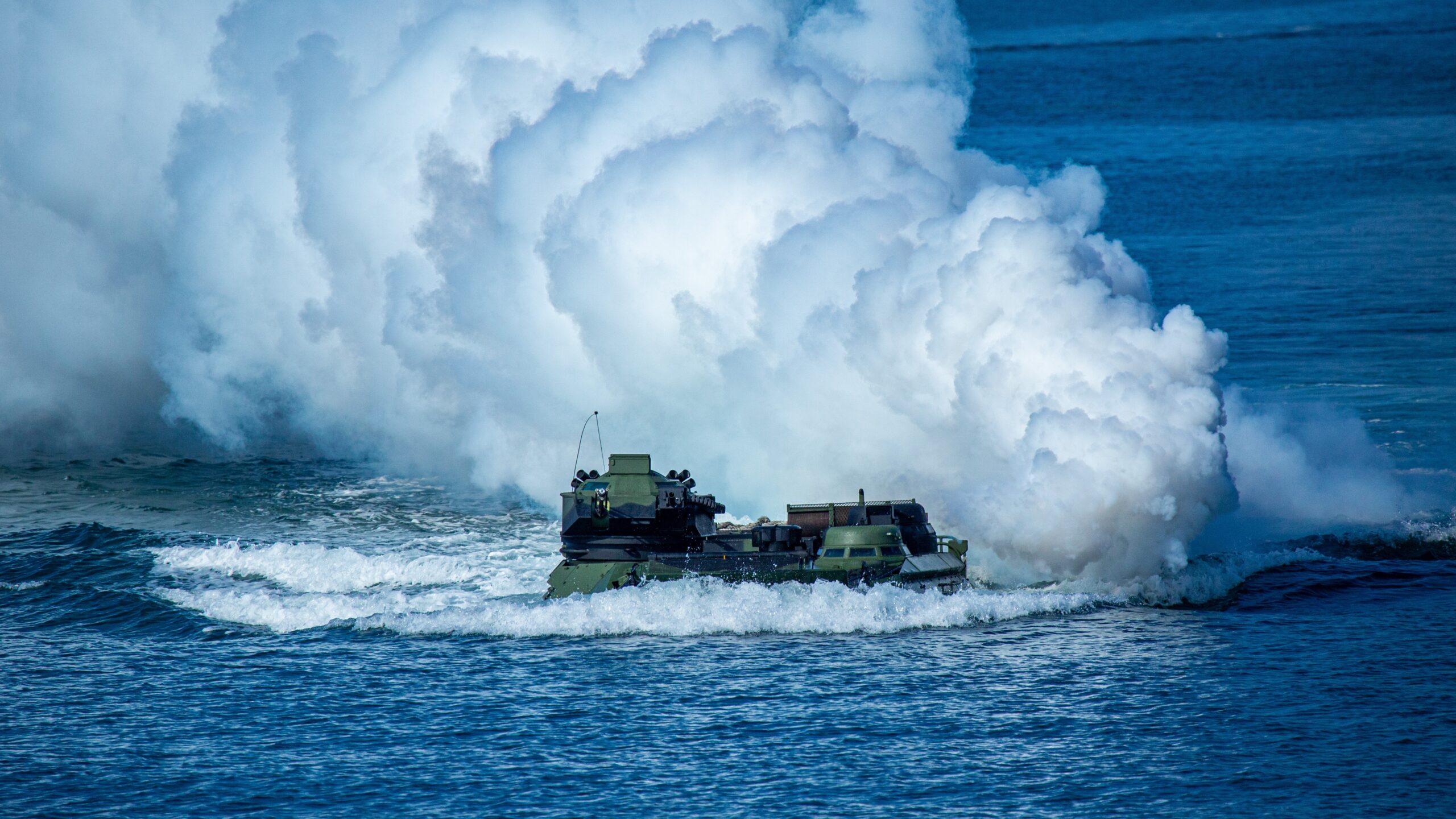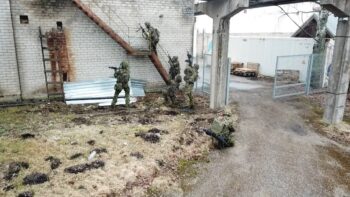
Taiwan’s AAV7 amphibious assault vehicle maneuvers across the sea during the Han Kuang military exercise, which simulates China’s People’s Liberation Army (PLA) invading the island, on July 28, 2022 in Pingtung, Taiwan. (Annabelle Chih/Getty Images)
WASHINGTON — Top US military leaders today declined to speculate on if or when they anticipate Chinese military forces would invade Taiwan, but they asserted that the US needs to continue providing the island with weapons to better protect its shores and airspace.
“Invasion is neither imminent or inevitable,” said Jedidiah Royal, the principal deputy assistant secretary of defense for Indo-Pacific Security Affairs, told lawmakers on the House Armed Services Committee. “The work that we’re doing in the department, every single day, is to focus on deterrence… by increasing our lethality or posture and our readiness.”
When asked if he believes China will invade Taiwan before 2027, the date by Chinese President Xi Jinping said he wants his forces to at least have that capability, US Indo-Pacific Command head Navy Admiral John Aquilino sidestepped a direct answer and instead said it is something “everybody’s guessing” at.
“It doesn’t matter what the timeline is,” he said. “I’m responsible to prevent this conflict today, and if deterrence were to fail, to be able to fight and win.”
“The intent and need for the INDOPACOM, the department, industry and [for] everybody is to go faster, [and that] will help prevent this conflict,” Aquilino later added.
Part of that deterrence calculus is helping Taiwan “understand” any incoming Chinese threat as it crosses over the Taiwan Strait, Royal said. That means providing Taipei with a variety of “critical” capabilities for intelligence, surveillance and reconnaissance, command-and-control and battle management, to help detect, communicate and manage the defense response.
“Taiwan also certainly needs to be able to make sure that any invading force is caught dead in its tracks in the strait as it comes across [and] to be able to defend at the beaches and to be able to be resilient, in depth, on [the] island,” he added.
Neither Royal nor Aquilino detailed what specific new weapons that may needed for such a defense, but the US State Department has approved the sale of Stinger anti-aircraft missiles, M1 Abrams main battle tanks, amphibious assault vehicles (AAVs), F-16 fighter aircraft and munitions, Volcano anti-tank munition-laying systems (mines) and more.
Document posted online during the recent Discord leak also shed light on Taiwan’s capability gaps. Some documents reportedly detail Taiwan’s assessment that its air defenses will not be able to accurately detect incoming missiles, and only half of the aircraft are fully mission capable.
Elsewhere in the hearing, lawmakers and military brass discussed providing the American territory of Guam with its own robust missile defense, as it pertains to Aquilino’s $3.5 billion unfunded priority list for FY24. Although the Department of Defense Comptroller has said the budget includes $1.5 billion for the “Defense of Guam” next year, the admiral said he needs an additional $147 million to build out that missile defense architecture.
Those additional dollars, he explained, would help ensure missile defense capabilities are integrated more quickly. Without them, Aquilino warned of a plan “delay” and said that “wouldn’t be optimal for our defense of Guam.”
The evolving plan includes many moving pieces from inside the Missile Defense Agency, Army and Navy, and will use the Army’s Integrated Air and Missile Defense Battle Command System (IBCS) once it is ready to deploy and the service has enough soldiers available to operate it, MDA Chief Adm. Jon Hill told reporters in March.
Four Long Range Discrimination Radars will be placed along the “periphery of the island” to provide 360-degree coverage, and Lower Tier Air and Missile Defense Sensor (LTAMDS) and Sentinel radars will also be used, Hill said.
MDA will also use a version of the land-based Aegis ashore system to include the missile launchers and enhanced mobile radars dubbed the “AN/TPY-6.”
A mix of launchers are also tied into the IBCS like the Terminal High-Altitude Area Defense, or THAAD, currently on the island, as well as Patriot launchers, and the aforementioned land-based variant of the Aegis vertical launch system. The Army’s future Enduring Shield air defense missile launcher (also called the Indirect Fire Protection Capability Increment 2, or IFPC Inc 2) will also be bound for the island and paired with either Raytheon’s ground-launched AIM-9X Sidewinder missile or a second interceptor not yet identified.






















